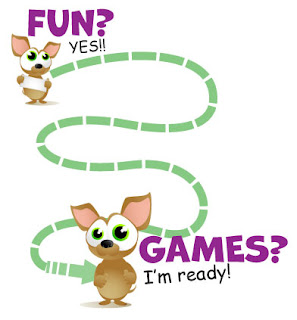The second website I had found was a website based from a TV show called Zoom.
I thought I would include a website like Zoom because it was really geared toward children. It is a website linked to a TV show that is for kids, I even remember watching this TV show growing up and playing the games that they featured on each show. This website not only had an array of different type of games for children to chose from, but was super appealing to youth. The bright colours, the funky design of the website all made it a fun visual, which children really enjoy. I think that having a website that is appealing to kids and shows kids different types of activities they can play with their friends is a great tool for them to initiate their own participation in physical activity. Like the first website I found as well, this website is not limited to only physically active games. It listed other games like mind games and word games for children to chose from. Even though this website was geared towards children, I think this website could be a useful tool for educators to use as a resourcce for games.
The third website I had found was a website called Daily Physical Activity.
This website I think would be a great tool for physical education educators because it lists a variety of different games in alphabetical order. I also thought that having a search bar on this website would also be handy for teachers looking for a specific game or needing to look up some rules for a certain game. This website however, is definitely geared toward an adult audience. It is definitely not as bright and colourful as the previous website I had found. So, I think if children were to come upon this website they would not be too impressed by it. I also thought this website was a pretty good one because the number of different games it provided. The list that was provided on the website, had links for games starting with the letter A to the letter Z (the game list actually only went to the letter W, but still that's a large database of games to have!).
Finally, I had found this clip on YouTube of a polar bear going to the gym. If a polar bear attempts to go to the gym, I think everyone else can make that attempt!










